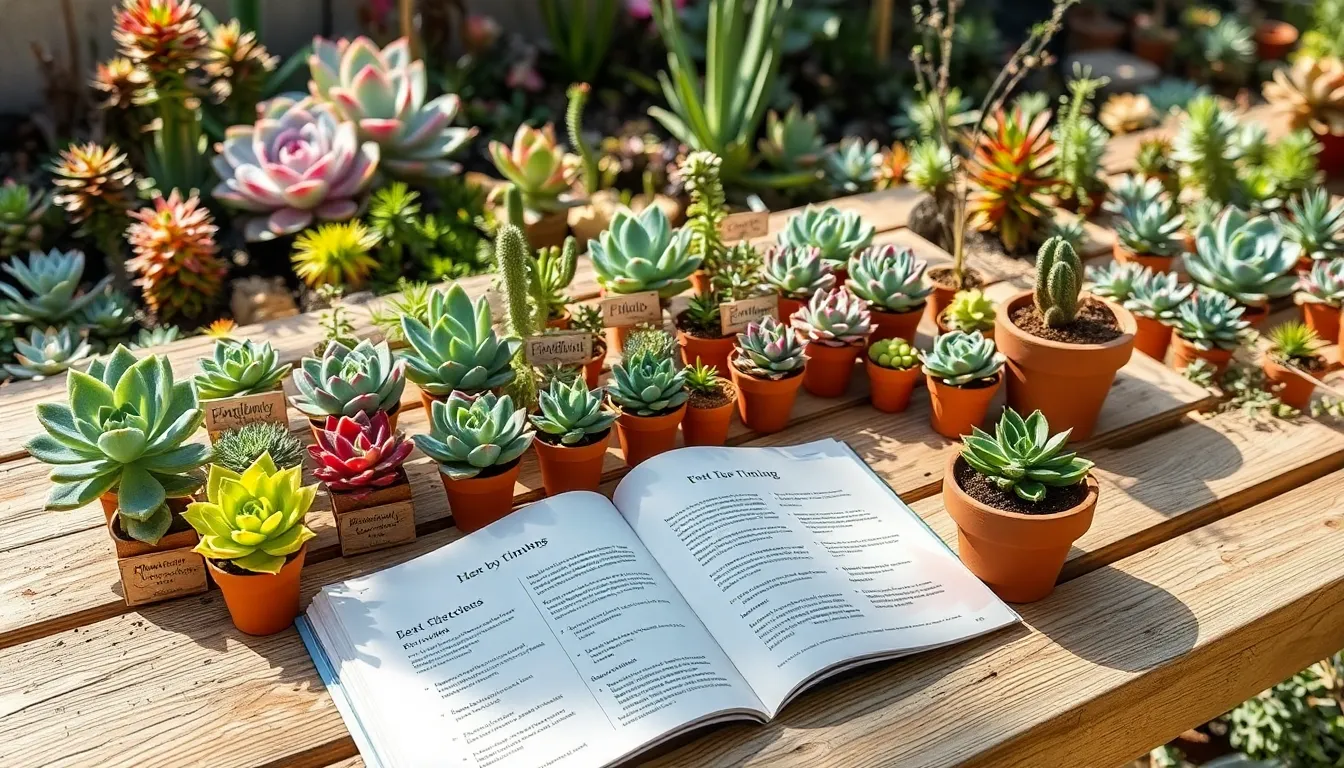In the enchanting world of gardening, few experiences are as rewarding as watching a new plant take root and thrive. Succulents, with their captivating forms and hardy nature, offer the perfect opportunity for gardeners of all levels to delve into the art of propagation. Whether you’re a beginner just starting to explore the wonders of greenery or a seasoned gardener looking to expand your collection, understanding when to propagate these resilient beauties is key to success.
Timing, as they say, is everything, and this couldn’t be more true in the context of propagating succulents. The process, while seemingly straightforward, requires a keen awareness of the plant’s natural growth cycles and environmental cues. In this article, we’ll guide you through the optimal seasons and conditions for propagation, ensuring that your succulent cuttings and leaves have the best chance to flourish. By the end, you’ll feel equipped and inspired to grow your own verdant paradise, one leaf at a time.
You’ll also discover practical tips and insights to enhance your propagation efforts, making the experience both enjoyable and fruitful. We’ll discuss how factors like light, temperature, and moisture play pivotal roles in the successful propagation of succulents. This journey will not only deepen your understanding of plant care but also cultivate a sense of patience and wonder. With each new plant, you’ll add a touch of nature’s magic to your home, creating a living testament to your growing skills and dedication.
Understanding Succulent Growth Cycles
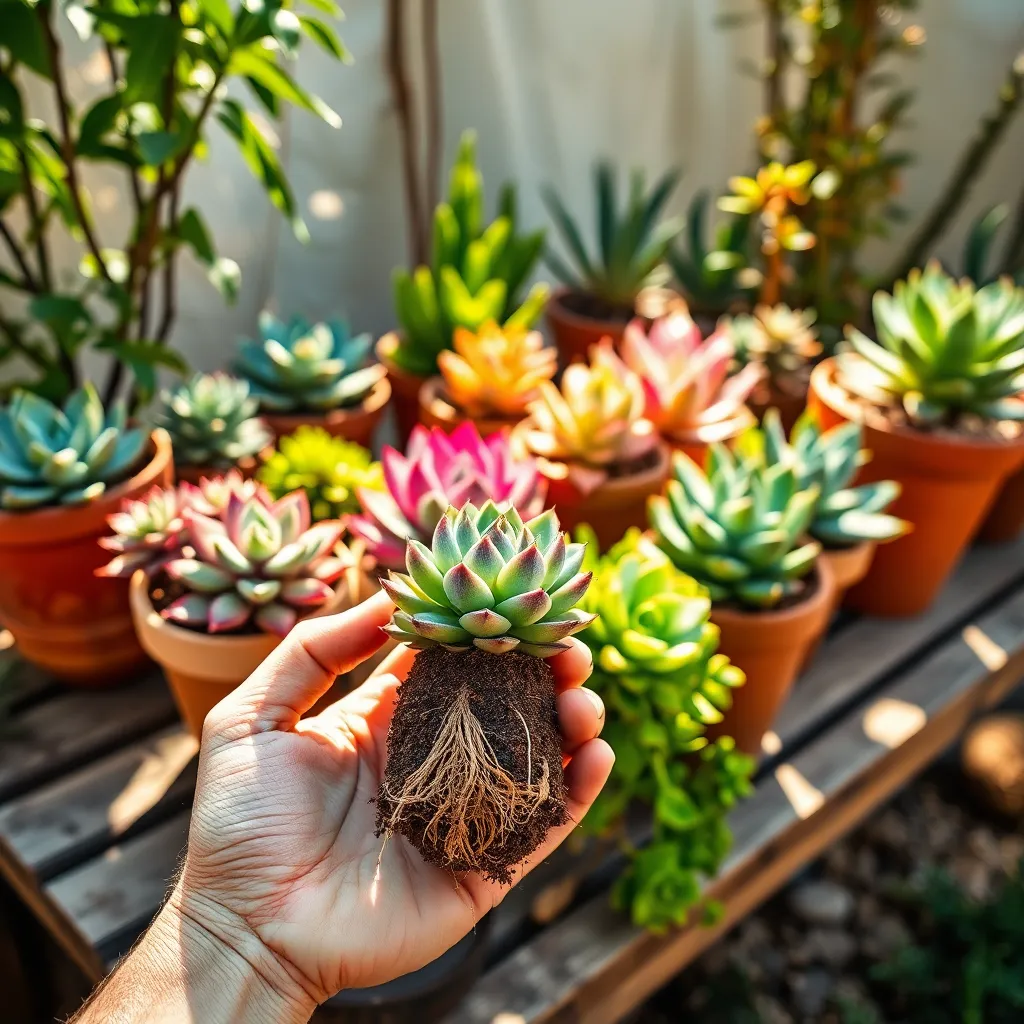
Understanding the growth cycles of succulents is crucial for successful propagation. These plants typically have two main growth phases: an active growth period and a dormant period.
During the active growth phase, succulents require more water and nutrients to flourish. It’s ideal to propagate succulents during this phase, as they have the energy to produce new roots and leaves.
Conversely, the dormant period is when succulents slow down and require less water. Attempting to propagate during dormancy can result in failed cuttings due to the plant’s reduced activity.
It’s essential to observe your succulent’s specific growth habits as they can vary by species. For instance, most succulents grow actively in spring and summer, but some, like certain aeoniums, have their active phase in winter.
To maximize success, use a well-draining soil mix, such as one composed of cactus potting soil and perlite. This ensures that the newly propagated succulents don’t sit in water, which can lead to root rot.
For beginners, watering once every two weeks during the active phase is generally sufficient, while experienced gardeners might adjust based on their specific climate and plant needs. Advanced techniques like misting can also be beneficial in arid environments to maintain humidity without overwatering.
Identifying Optimal Propagation Seasons
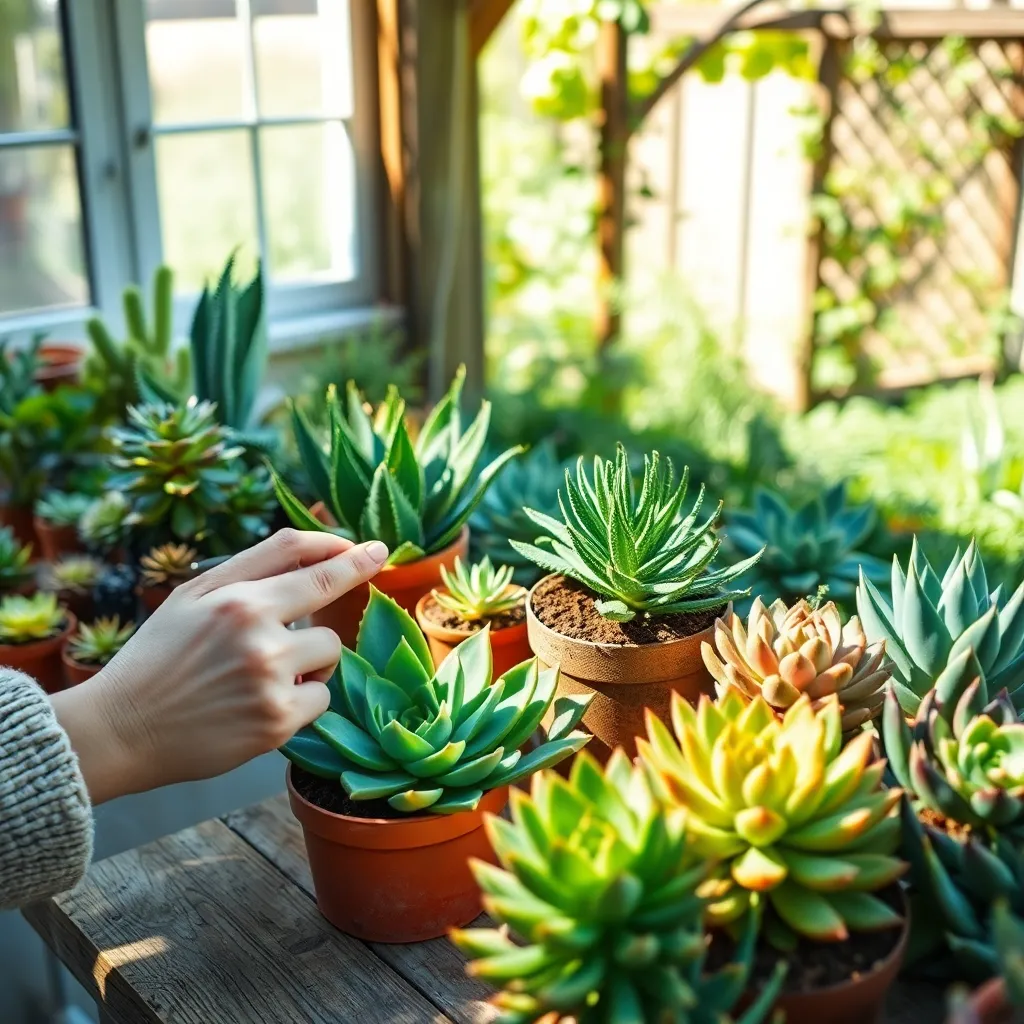
To identify the optimal propagation seasons for succulents, it’s essential to understand their natural growth cycles. Succulents typically thrive when propagated during their active growing seasons, which are usually spring and summer.
The warmer months support new root development, making these seasons ideal for propagation. During this time, the longer daylight hours and mild temperatures create an environment conducive to growth and establishment.
Beginners should focus on propagating succulents when temperatures consistently stay above 60°F (15°C). Providing bright, indirect light and using a well-draining soil mix will further enhance success rates.
Advanced gardeners might experiment with propagation in early fall in mild climates, ensuring they protect young plants from early frosts. Once propagated, it’s crucial to gradually introduce the plants to direct sunlight to prevent sunburn.
Signs Your Succulent is Ready
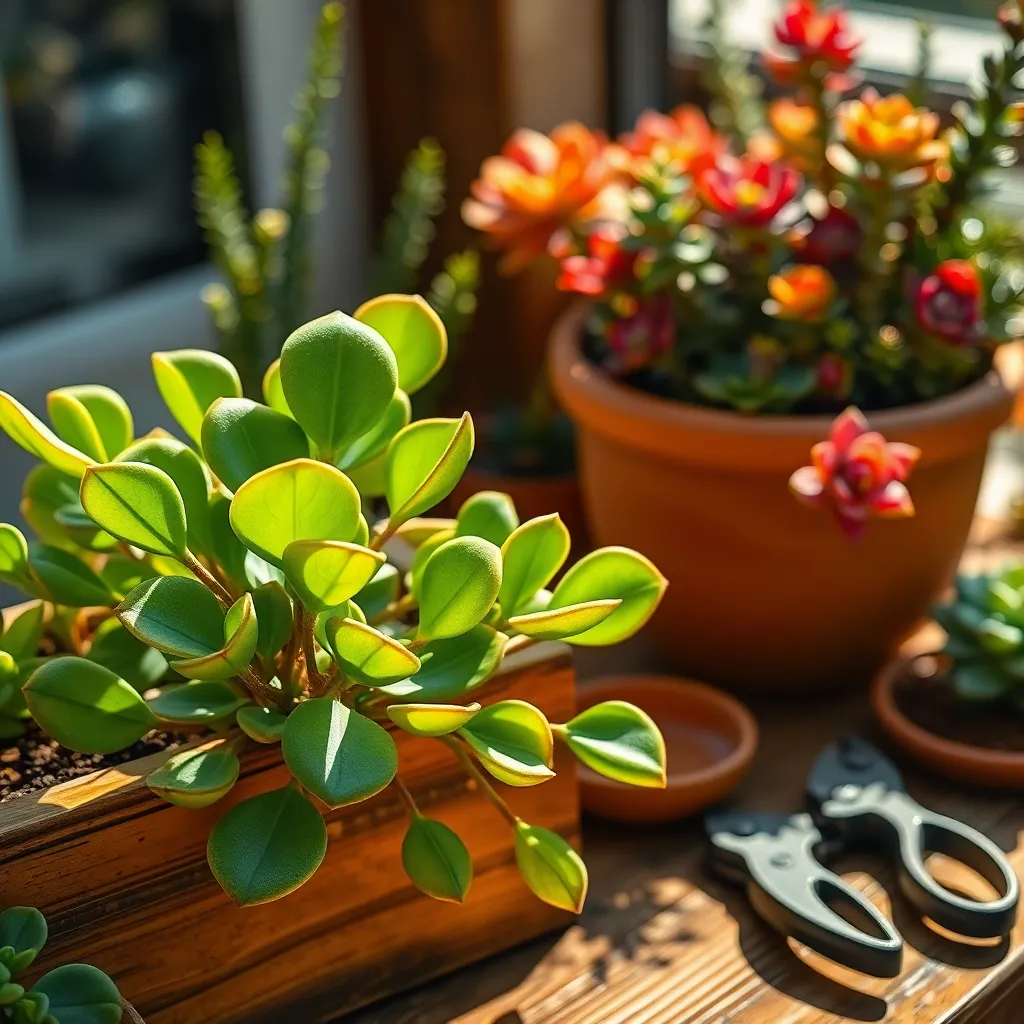
Noticing the right signs in your succulent is crucial before attempting propagation. The first indicator that your succulent is ready is when it has reached a mature size, with a healthy, full rosette or stem structure.
Look for a plant with vibrant, firm leaves that show no signs of wilting or damage. Healthy succulents are more vigorous and likely to propagate successfully, making them ideal candidates for new growth.
Another key sign is when the succulent has produced offsets or baby plants around its base. These offsets can be gently removed and replanted, offering a straightforward method of propagation.
Check if the main plant or its branches have elongated, indicating a strong urge to grow. This elongation, known as “etiolation,” often happens when the plant seeks more light, and it can be an excellent opportunity to propagate and manage growth.
Before proceeding, ensure your succulent has been watered adequately in the weeks leading up to propagation. A well-hydrated plant is less stressed during the propagation process and recovers more quickly, enhancing the chances of success.
For best results, use a well-draining soil mix, such as one designed specifically for cacti and succulents. This type of soil prevents root rot and provides the optimal environment for new roots to establish.
Best Conditions for Root Development
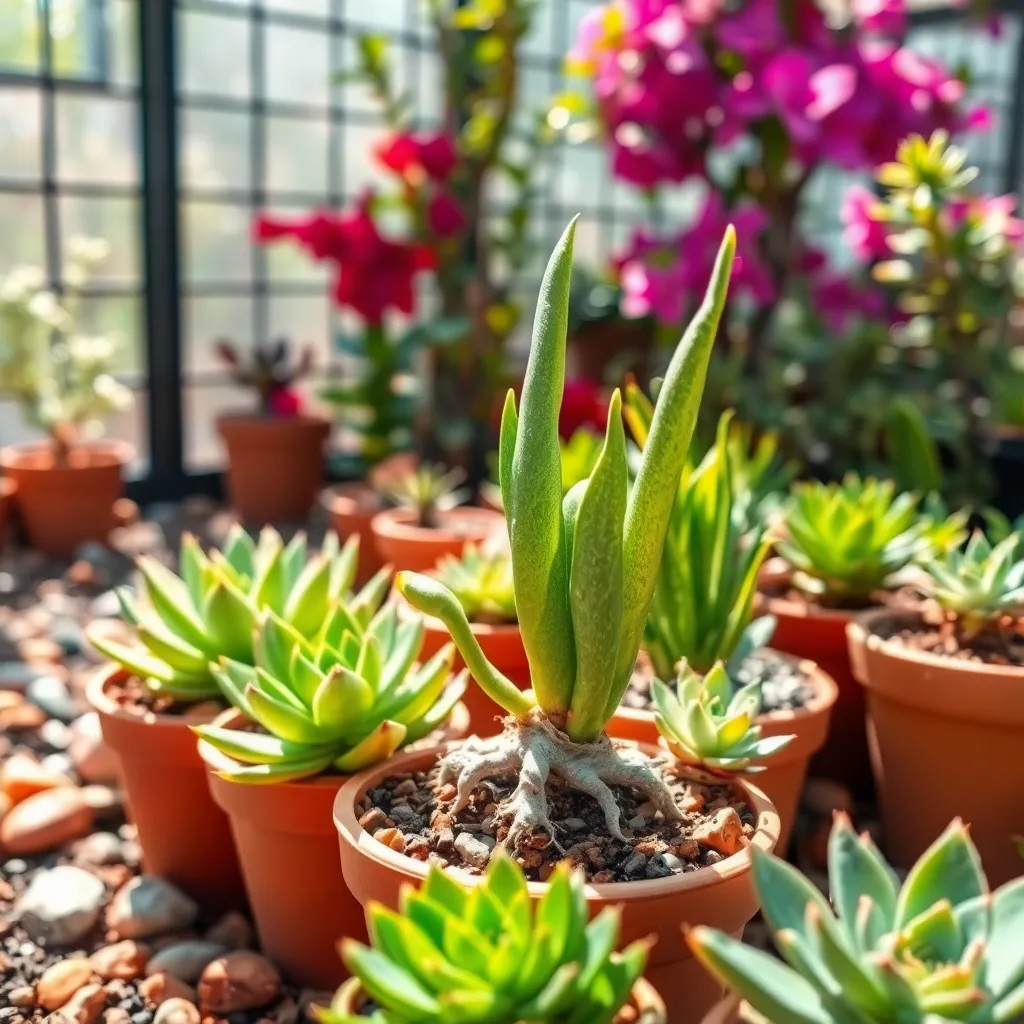
Creating the best conditions for root development in succulents is crucial for successful propagation. Begin by choosing a well-draining soil mix, such as a combination of cactus soil and perlite, which ensures proper aeration and prevents root rot.
It’s essential to provide adequate light to encourage healthy root growth. Place your succulents in a bright location, ideally near a south-facing window, where they can receive plenty of indirect sunlight.
Watering plays a critical role in root development. Allow the soil to dry out completely between waterings to mimic the natural desert environment of succulents, promoting strong root establishment.
For more advanced gardeners, consider using a rooting hormone to speed up the rooting process. Dip the cut end of your succulent leaf or stem in the hormone before planting it in the soil, as this can enhance root growth significantly.
Post-Propagation Care Tips
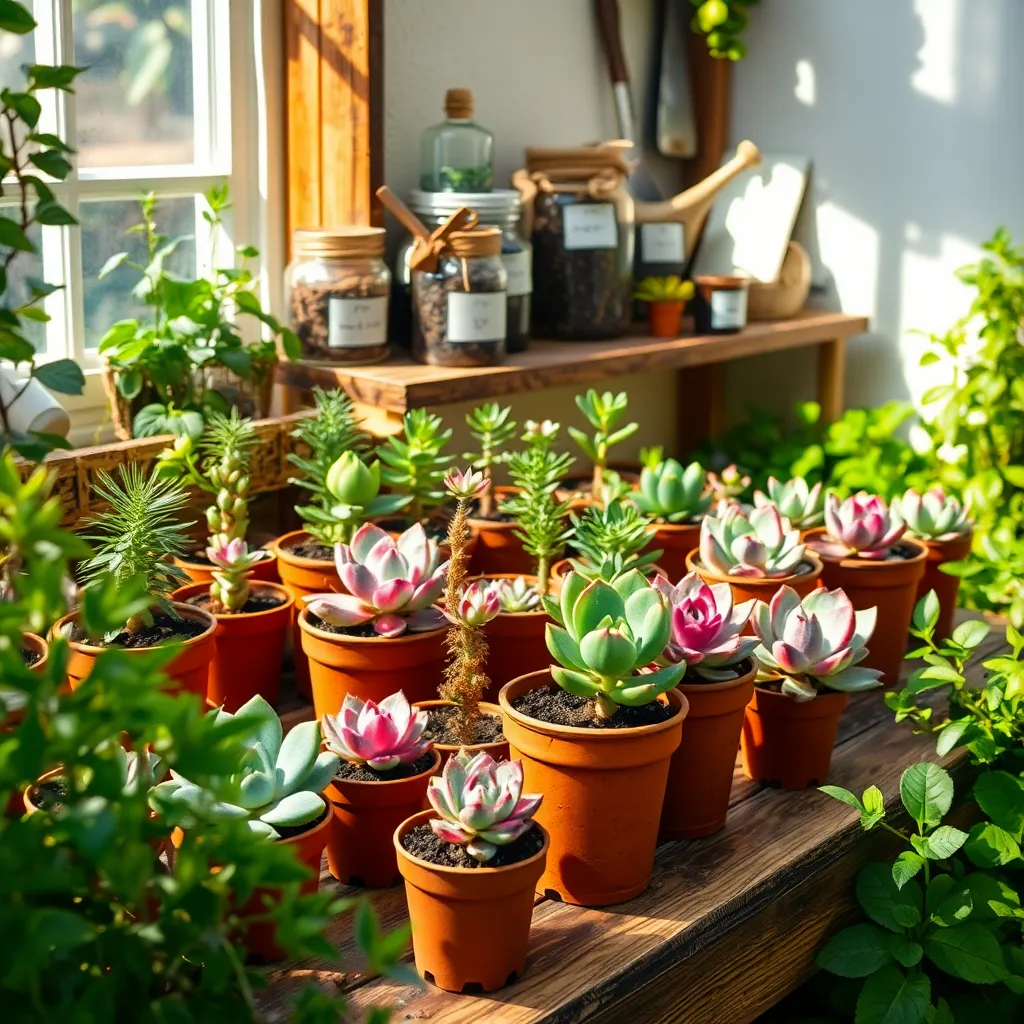
Once your succulent cuttings have developed roots, it’s crucial to transition them into a suitable potting mix to ensure healthy growth. Use a well-draining soil mix, ideally something formulated specifically for succulents and cacti, to prevent root rot.
When moving your rooted cuttings, handle them gently to avoid damaging the delicate roots. Plant them in small pots with drainage holes to allow excess water to escape, promoting a healthy root environment.
Watering newly propagated succulents requires a careful balance. Allow the soil to dry out completely between waterings, and then water thoroughly, ensuring the water drains freely from the pot.
Light is essential for succulents, but too much direct sunlight can scorch young plants. Place your succulents in a bright spot with indirect sunlight, gradually increasing their exposure as they mature.
Humidity can impact succulent growth, especially in indoor environments. If you notice signs of excessive moisture, such as mold or mildew, improve air circulation around the plants by using a fan or opening a window.
Fertilizing is not necessary for succulents in their early stages, but once they establish, a diluted, balanced fertilizer can be used during the growing season. Apply it sparingly, as succulents are adapted to thrive in nutrient-poor conditions.
Conclusion: Growing Success with These Plants
In exploring the art of propagating succulents, we uncovered five vital relationship insights: the importance of timing, the necessity of nurturing, the value of patience, the role of a supportive environment, and the joy of growth. Just as succulents thrive when given the right conditions, relationships flourish when we apply these principles. Timing is everything—recognize when your relationship needs attention. Nurture it with love and understanding, practice patience as it evolves, cultivate a supportive space, and celebrate the growth you achieve together.
Now, take immediate action: identify one area in your relationship that could benefit from a little extra care and make a plan to address it today. Whether it’s a heartfelt conversation or planning a special date, your proactive approach will sow seeds of positivity.
Remember, nurturing strong relationships is a journey. Bookmark this article as a handy reference to revisit these guiding principles. As you continue to invest in your connections, anticipate a future where your relationships not only survive but thrive. Embrace the growth ahead with confidence and warmth, knowing that you have the tools to cultivate lasting bonds.

